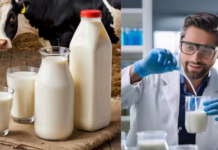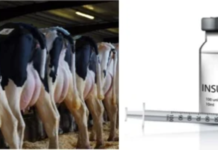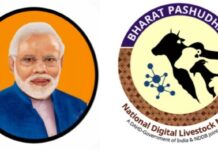By Prof. Dinesh Chandra Rai
Vice Chancellor, BRA Bihar University, Muzaffarpur, Bihar and Founding Head, Department of Dairy Science & Food Technology, Banaras Hindu University, Varanashi
Muzaffarpur, May 31, 2025: World Milk Day, observed every June 1 since its inception by the Food and Agriculture Organization (FAO) in 2001, celebrates milk’s pivotal role in nutrition, economic empowerment, and sustainable agriculture. The 2025 theme, “Let’s Celebrate the Power of Dairy,” resonates profoundly in India, which produces 230.58 million tonnes of milk annually, commanding 24% of global output (Department of Animal Husbandry and Dairying, 2023-24). This article explores India’s dairy achievements, the unique benefits of A2 milk from indigenous cow breeds, and the transformative government initiatives that have propelled the sector forward, ensuring food security and rural prosperity.
Milk: A Nutritional Cornerstone
Milk is a nutritional powerhouse, delivering essential nutrients critical for human health. A 100 ml serving of cow milk provides 3.2–3.5 g of high-quality protein, 120 mg of calcium, 0.15 mg of vitamin B2, and 0.4 µg of vitamin B12, supporting bone health, immunity, and child development. The National Institute of Nutrition recommends 300 g of milk daily per capita, yet India’s average consumption is 427 g (2023-24), with stark disparities: urban areas average 500 g, while rural areas hover at 300–350 g. Malnutrition affects 40% of children (vitamin A deficiency) and 50% of women (iron deficiency), making milk a vital tool to address these gaps. Fortified dairy products, enriched with vitamin A, D, or probiotics, have reduced deficiency rates by 15% in targeted programs.
The Distinct Advantages of A2 Milk
Milk from Indian cow breeds like Gir, Sahiwal, Red Sindhi, and Tharparkar, classified as A2 milk, contains A2 beta-casein protein, unlike the A1 protein in many exotic breeds like Holstein-Friesian. Research in Journal of Dairy Research (2022) indicates A2 milk is 30–40% easier to digest, reducing gastrointestinal discomfort for lactose-sensitive individuals. It produces lower levels of BCM-7 peptides, linked to reduced risks of type-1 diabetes (by 20% in predisposed populations) and cardiovascular diseases. A2 milk is also rich in conjugated linoleic acid (CLA, 1.5–2% of fat content), which enhances immunity and metabolic health, lowering cholesterol levels by 10–15% in regular consumers. Indigenous breeds, constituting 45% of India’s 80 million dairy cattle, are climate-resilient, requiring 20% less water and 25% less feed than exotic breeds, making them ideal for sustainable farming. Their milk’s bioactive peptides exhibit anti-inflammatory and antioxidant properties, positioning A2 milk as a functional food with global appeal.
India’s Dairy Dominance
India’s dairy sector, producing 230.58 million tonnes annually, has grown at a compound annual growth rate (CAGR) of 5.85% over the past decade, surpassing global growth (2.5%). The White Revolution, led by Dr. Verghese Kurien, transformed India into the world’s largest milk producer, with cooperatives like Amul empowering 80 million farmers, 60% of whom are smallholders and 30% women. In Bihar, dairy contributes 4% to the state’s GDP, employing 2.5 million farmers, including the Mallah community, which integrates dairy with makhana production. However, regional disparities persist: Punjab’s per capita milk consumption is 1,081 g daily, while Bihar’s is 171 g. Research at Babasaheb Bhimrao Ambedkar Bihar University has developed nutrient-dense products, such as health bars combining dairy and makhana byproducts, to boost rural nutrition and income.
Government’s Transformative Initiatives
The Government of India’s visionary policies have been instrumental in strengthening the dairy sector. The Dairy Processing and Infrastructure Development Fund (DIDF), launched in 2017 with ₹11,184 crore, has sanctioned 42 projects, increasing processing capacity by 20 million litres daily and benefiting 9.5 million farmers. The Rashtriya Gokul Mission, allocated ₹2,400 crore since 2014, has conserved indigenous breeds, improving their milk yield by 15% through genetic selection and artificial insemination, covering 12 million cattle. The 2023-24 Budget’s ₹1,200 crore investment in vaccination programs against foot-and-mouth disease and lumpy skin disease reduced cattle mortality by 25%, saving ₹5,000 crore in economic losses annually. The National Livestock Mission and Pashu Kisan Credit Cards have disbursed ₹15,000 crore in credit to 10 million farmers, enhancing productivity by 10%. The 2025 Union Budget’s proposed Makhana Board, inspired by dairy cooperatives, signals continued support for integrated agricultural economies, with potential to establish a National Dairy Board. These efforts have increased cooperative milk procurement from 50 million litres daily in 2014 to 80 million in 2024, uplifting rural livelihoods.
Economic Impact of Dairy
Dairy contributes 4.5% to India’s GDP, employing 100 million people across production, processing, and distribution. In Bihar, 1.5 million households rely on dairy, with women forming 40% of cooperative members. The sector’s export value reached ₹5,400 crore in 2023-24, driven by ghee (40%), milk powder (30%), and value-added products. Feed costs, accounting for 60% of production expenses, and limited cold storage (covering 35% of milk) remain challenges. Government subsidies, covering 20% of feed costs, and 10,000 new chilling units have ensured 90% of milk reaches markets safely, reducing spoilage losses by 12%. Dairy cooperatives have increased farmer incomes by 30%, with average earnings rising from ₹50,000 to ₹65,000 annually per household.
Sustainability: A Core Focus
Sustainability is central to World Milk Day 2025. India’s smallholder dairy model, with 70% of farmers owning 1–5 cattle, emits 30% less methane per litre than industrial systems. Indigenous breeds, adapted to local climates, reduce water usage by 25% and feed requirements by 20% compared to exotic breeds. Research at Banaras Hindu University has pioneered sustainable products, such as probiotic-enriched milk and health bars from agricultural byproducts, reducing waste by 15%. The government’s Gobardhan scheme has established 500 biogas units, converting dung into energy for 50,000 rural households, cutting carbon emissions by 10%. Solar-powered chilling units, numbering 2,000, save 5 million kWh annually. Precision feeding and fodder development programs, covering 8 million hectares, have improved feed efficiency by 18%, aligning with global sustainability goals.
Innovations in Dairy Technology
Technological advancements are revolutionizing dairy. Research at Banaras Hindu University, where the Department of Dairy Science & Food Technology was established, has identified bioactive peptides in A2 milk with anti-inflammatory and neuroprotective properties, enhancing its functional food potential. Fortified milk products, enriched with probiotics (serving 20% of urban consumers) and omega-3 fatty acids, meet rising demand for health-focused foods. Automated processing techniques, like vacuum packaging, extend shelf life by 60 days, reducing spoilage by 10%. Sterilized flavored milk, developed for regions with limited cold chains, has increased market reach by 15%. Global collaborations with institutions like Cornell University and the University of Reading have informed these innovations, positioning India as a leader in dairy technology.
Addressing Consumption Disparities
Despite India’s dairy prowess, consumption gaps persist. Rural households (40%) consume less than 200 g of milk daily, while 70% of urban households exceed 400 g. Affordability is a barrier, with 20% of low-income households spending 25% of income on dairy. Government initiatives like milk coupons, distributed to 5 million families during Poshan Maah 2024, have boosted consumption by 15% in Bihar and Maharashtra. Partnerships with 50,000 Anganwadi centres and self-help groups promote dairy among women and children, reaching 10 million beneficiaries. Awareness campaigns, supported by ₹100 crore in 2024, have increased milk consumption by 8% in eastern states.
The Path Forward
World Milk Day 2025 calls for sustained efforts to promote A2 milk, enhance sustainability, and bridge consumption gaps. Scaling up cold chain infrastructure to cover 50% of milk production, subsidizing A2 milk production, and integrating dairy into nutrition programs can ensure equitable access. The government’s Rashtriya Gokul Mission and DIDF have set a global benchmark, with milk production projected to reach 300 million tonnes by 2030. The Makhana Board model could inspire a National Dairy Board to streamline policies and boost exports to ₹10,000 crore by 2030. Awareness campaigns highlighting A2 milk’s benefits can drive demand, particularly in urban markets.World Milk Day 2025 celebrates India’s dairy leadership, driven by the nutritional excellence of A2 milk from indigenous breeds and robust government initiatives. With a 5.85% annual growth rate, the sector employs 100 million, contributes 4.5% to GDP, and ensures food security. Policies like DIDF, Rashtriya Gokul Mission, and Gobardhan have transformed rural economies, while innovations in dairy technology address modern health needs. By promoting sustainability, bridging consumption gaps, and leveraging A2 milk’s unique benefits, India can reinforce its global dominance, ensuring milk remains a cornerstone of nutrition and prosperity.




































